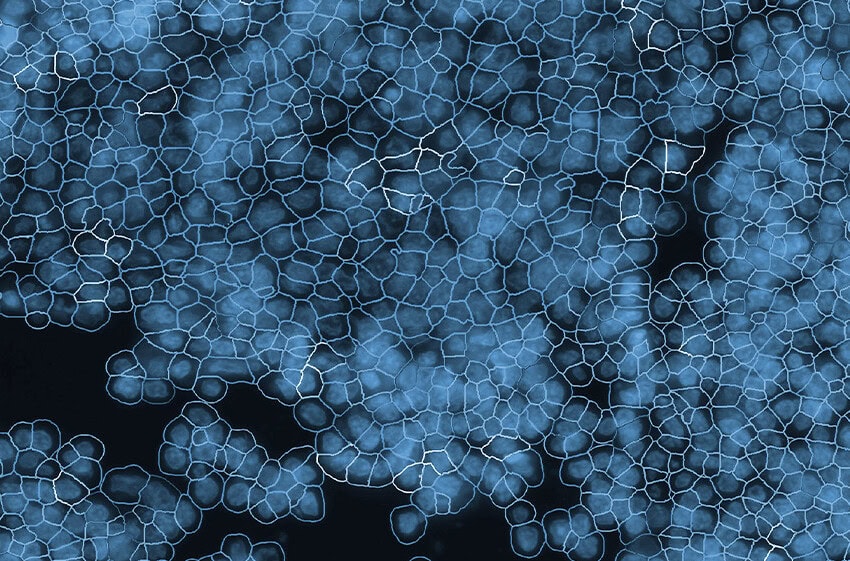
Common questions in molecular biology: What do oligonucleotides do in PCR?
Oligonucleotides are relatively short single-stranded sequences of nucleotides, the monomeric subunits of both DNA and RNA. The use of oligonucleotides (also known as oligomers or “oligos”) is invaluable in many molecular biology techniques, including PCR and DNA sequencing. PCR has played a major role in advancing biological research and biomedicine to their current state.
Oligonucleotides in PCR
PCR (polymerase chain reaction) is a method for rapidly amplifying the number of copies of a specific DNA sequence in a sample. PCR is a series of repeated DNA replication steps, with each step producing more of the target DNA sequence. PCR reagents include template DNA (typically extracted from a tissue), a DNA polymerase enzyme, and specific oligonucleotide primers. Primers are short single-stranded oligos required by DNA polymerases for initiation of DNA replication, as they can only add nucleotides to existing nucleic acid sequence.
The cycle of steps in PCR are: melting (un-annealing) of template DNA, annealing of specific primers, attachment of DNA polymerase, and elongation of new DNA molecules. After the elongation step, the process restarts for the next cycle. Typically, 25-35 cycles are completed for a PCR protocol, though that varies depending on the specific application. Most PCR protocols require two primers, especially those using DNA templates, one forward and one reverse, to make a double-stranded product.
PCR primer design is facilitated by computer programs that identify efficient primers by analyzing available genomic information.
Designing PCR primers to anneal highly specific complementary target sequences requires consideration of several factors to ensure amplification of the correct gene, such as the melting and annealing temperatures and the uniqueness of the template target regions. PCR primer design is facilitated by computer programs to produce efficient primers by analyzing the extensive available genomic sequence information. Although some trial-and-error still occurs, designing primers has become a straightforward process.
The importance of oligonucleotide complementarity
Oligonucleotide primers are an integral part of PCR not only due to requirements of DNA polymerases but also due to their specificity. The method of information conveyance inherent to nucleic acids, both DNA and RNA, is a function of the complementarity of nucleic acids and helps maintain sequence integrity, making PCR possible and practical. Governed by chemical recognition through specific hydrogen-bonds, complementary nucleotide bases align with each other to form double-stranded molecules. Called annealing, this process dictates that adenine (A) pairs with thymine (T) in DNA or uracil (U) in RNA, and that guanine (G) pairs with cytosine (C) in both. DNA and RNA can anneal with each other as well as themselves, enabling DNA to be used as a probe for RNA and vice versa.
Oligonucleotide primers make PCR not only possible but invaluable as a molecular method.
Each nucleotide in a single-stranded sequence therefore dictates that its complementary nucleotide is added to any newly produced strands via their specific hydrogen bonds, thus preserving sequence integrity and information transfer. For these reasons, oligonucleotide primers are integral to PCR, and make PCR not only possible but invaluable as a molecular method. Complementarity between DNA and RNA provide innumerable uses for PCR in biological research, particularly for gene expression studies.
Quantitative PCR (qPCR; also known as real-time PCR or quantitative real-time PCR) is a PCR-based technique that amplifies a target DNA sequence for quantification of a DNA species in a sample. Working backwards from known reagent concentrations, qPCR allows calculation of starting template concentrations for evaluating such factors as DNA copy number and viral load. qPCR is also used in gene expression studies to quantify mRNAs after performing a reverse-transcription step and sets the standard for analyzing microarray gene expression profiling data. qPCR and its many technical variations have broad applications which depend on oligonucleotide primers at multiple steps for successful execution (Dymond).
Other uses of oligonucleotide primers
Oligonucleotide primers can be used in gene expression studies in methods other than PCR. NanoString’s nCounter® Pro Analysis System, for example, includes no amplification steps but uses oligonucleotides to identify and quantify mRNA transcripts, providing similar results to qPCR. Using three specifically designed oligonucleotides based on the target transcript sequence, nCounter Pro’s probes consist of two 50mer DNA oligonucleotides designed complementary to opposite ends of a unique 100 bp stretch of the gene. Attached immediately adjacent to one 50mer oligo is a DNA oligonucleotide backbone annealed to an RNA molecular barcode labeled with fluorophores in a specific order, creating a unique code for each gene of interest (Geiss). The two oligonucleotides, the reporter and capture probes, are hybridized to target RNA in the absence of any enzymatic amplification, creating a fluorescent tripartite structure used for identifying and quantifying each transcript.
Eliminating enzymatic amplification steps and minimizing the length of the target sequence makes these oligonucleotide probes more reliable than qPCR, with a higher tolerance for challenging sample types and suboptimal RNA quality.
References
Dymond JS, Chapter Twenty Three – Explanatory Chapter: Quantitative PCR, Editor(s): Jon Lorsch, Methods in Enzymology, Academic Press, Volume 529, 2013, Pages 279-289, ISSN 0076-6879, ISBN 9780124186873, https://doi.org/10.1016/B978-0-12-418687-3.00023-9.
Geiss GK, Bumgarner RE, Birditt B, Dahl T, Dowidar N, Dunaway DL, Fell HP, Ferree S, George RD, Grogan T, James JJ, Maysuria M, Mitton JD, Oliveri P, Osborn JL, Peng T, Ratcliffe AL, Webster PJ, Davidson EH, Hood L, Dimitrov K. Direct multiplexed measurement of gene expression with color-coded probe pairs. Nat Biotechnol. 2008 Mar;26(3):317-25. doi: 10.1038/nbt1385. Epub 2008 Feb 17. PMID: 18278033.


